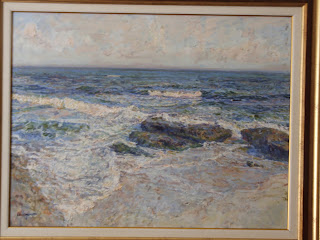the top 50 internet sites, from CNN to Yahoo to MSN, install an average of 64 data-laden cookies and personal tracking beacons each. Search for a word like "depression" on Dictionary.com, and the site installs up to 223 tracking cookies and beacons on your computer so that other websites can target you with antidepressants. Open a page listing signs that your spouse may be cheating, and prepare to be haunted with DNA paternity-test ads.Such is the worrying intro to this excerpt from a new book on internet search engines which continues -
The race to know as much as possible about you, has become the central battle of the era for internet giants like Google, Facebook, Apple and Microsoft. As Chris Palmer of the Electronic Frontier Foundation explained to me: "You're getting a free service, and the cost is information about you. And Google and Facebook translate that pretty directly into money." While Gmail and Facebook may be helpful, free tools, they are also extremely effective and voracious extraction engines into which we pour the most intimate details of our lives. In the view of the "behaviour market" vendors, every "click signal" you create is a commodity, and every move of your mouse can be auctioned off within microseconds to the highest commercial bidder. The internet giants' formula is simple: the more personally relevant their information offerings are, the more ads they can sell, and the more likely you are to buy the products they're offering. And the formula works. Amazon sells billions of dollars in merchandise by predicting what each customer is interested in and putting it in the front of the virtual store. Up to 60% of US film download and DVD-by-mail site Netflix's rentals come from the guesses it can make about each customer's preferences.How to deal with this? The discussion thread had the following ideas -
You may think you're the captain of your own destiny, but personalisation can lead you down a road to a kind of informational determinism in which what you've clicked on in the past determines what you see next – a web history you're doomed to repeat. You can get stuck in a static, ever- narrowing version of yourself – an endless you-loop.
And there are broader consequences. In Bowling Alone, his book on the decline of civic life in America, Robert Putnam looked at the problem of the major decrease in "social capital" – the bonds of trust and allegiance that encourage people to do each other favours, work together to solve common problems, and collaborate. Putnam identified two kinds of social capital: there's the in-group-oriented "bonding" capital created when you attend a meeting of your college alumni, and then there's "bridging" capital, which is created at an event like a town meeting when people from lots of different backgrounds come together to meet each other. Bridging capital is potent: build more of it, and you're more likely to be able to find that next job or an investor for your small business, because it allows you to tap into lots of different networks for help. Everybody expected the internet to be a huge source of bridging capital. Writing at the height of the dotcom bubble, Tom Friedman declared that the internet would "make us all next-door neighbours". But that's not what's happening: our virtual neighbours look more and more like our real-world neighbours, and our real-world neighbours look more and more like us. We're getting a lot of bonding but very little bridging. And this is important because it's bridging that creates our sense of the "public" – the space where we address the problems that transcend our narrow self-interests.
As a consumer, it's hard to argue with blotting out the irrelevant and unlikable. But what is good for consumers is not necessarily good for citizens. What I seem to like may not be what I actually want, let alone what I need to know to be an informed member of my community or country. "It's a civic virtue to be exposed to things that appear to be outside your interest," technology journalist Clive Thompson told me. Cultural critic Lee Siegel puts it a different way: "Customers are always right, but people aren't."
• There are still other search engines, such as Dogpile, and GoodSearch, which even lets you designate a charity to get about a penny for each search you do. (It adds up if a lot of people choose that charity.)
• Simple answer, just click on everything. They want data, give 'em loads
• Deleting cookies would be a good start? A simple way to do this is to use Firefox, go to Tools / Options and choose the cookies setting 'Keep until I close Firefox'. But this poses priblems for people such as me who want o shop at Amazon and pile books into a basket for subsequent editing…






